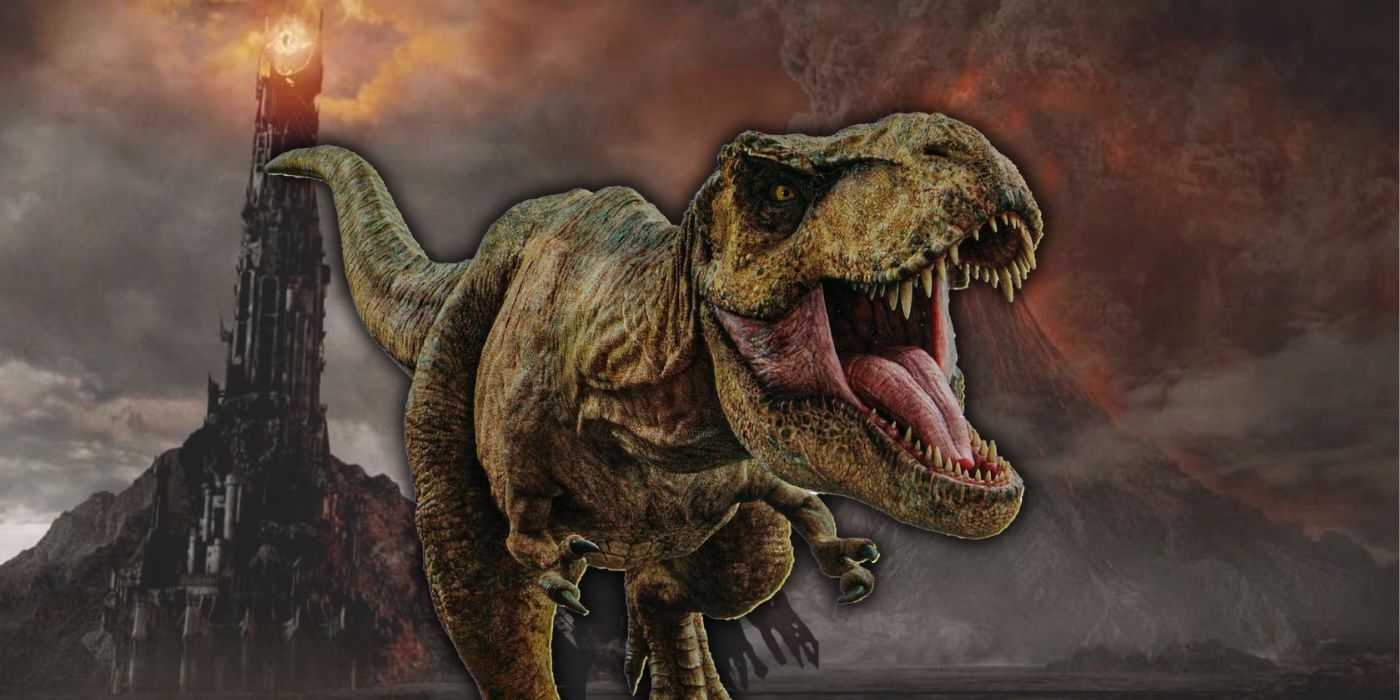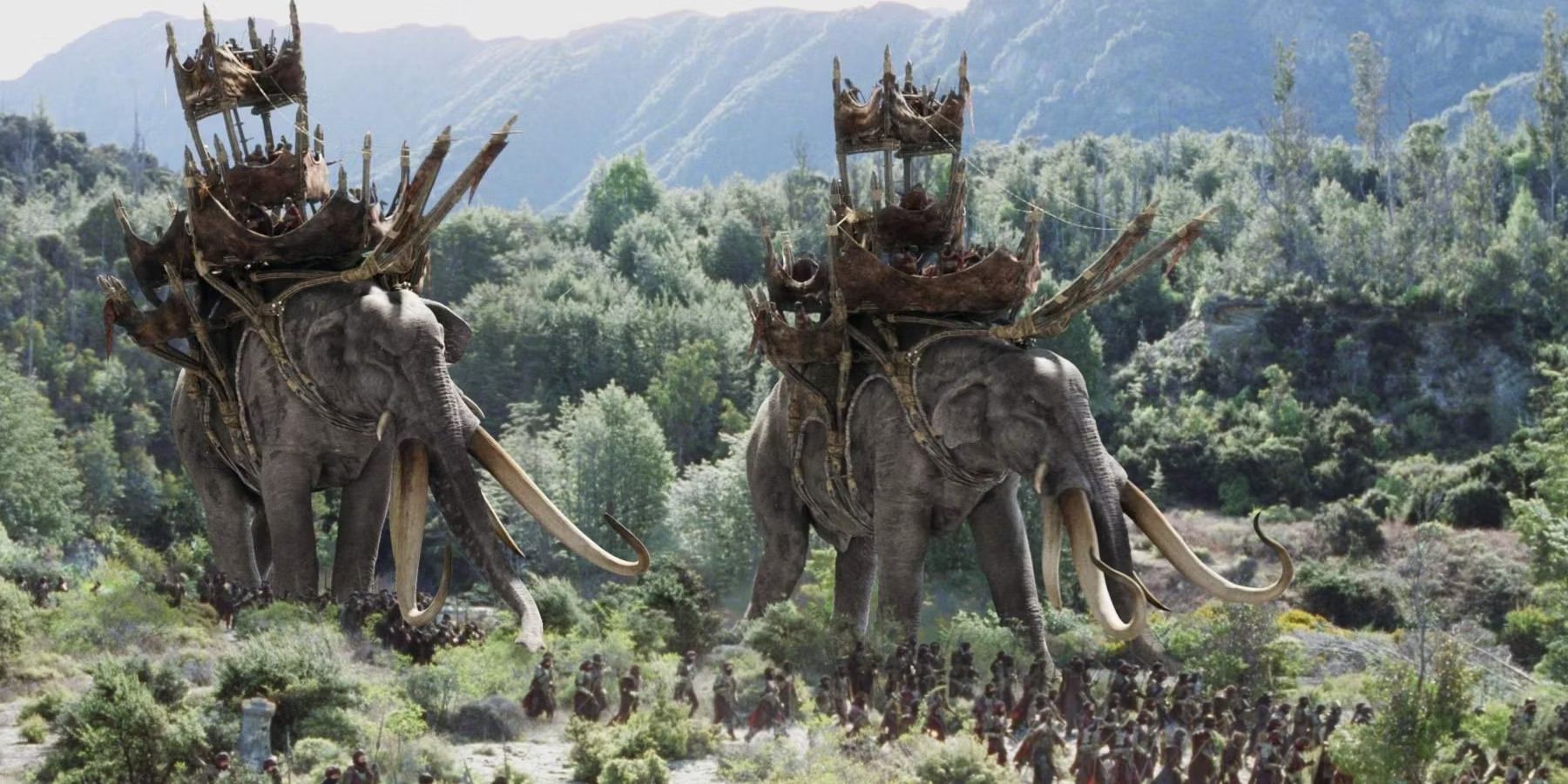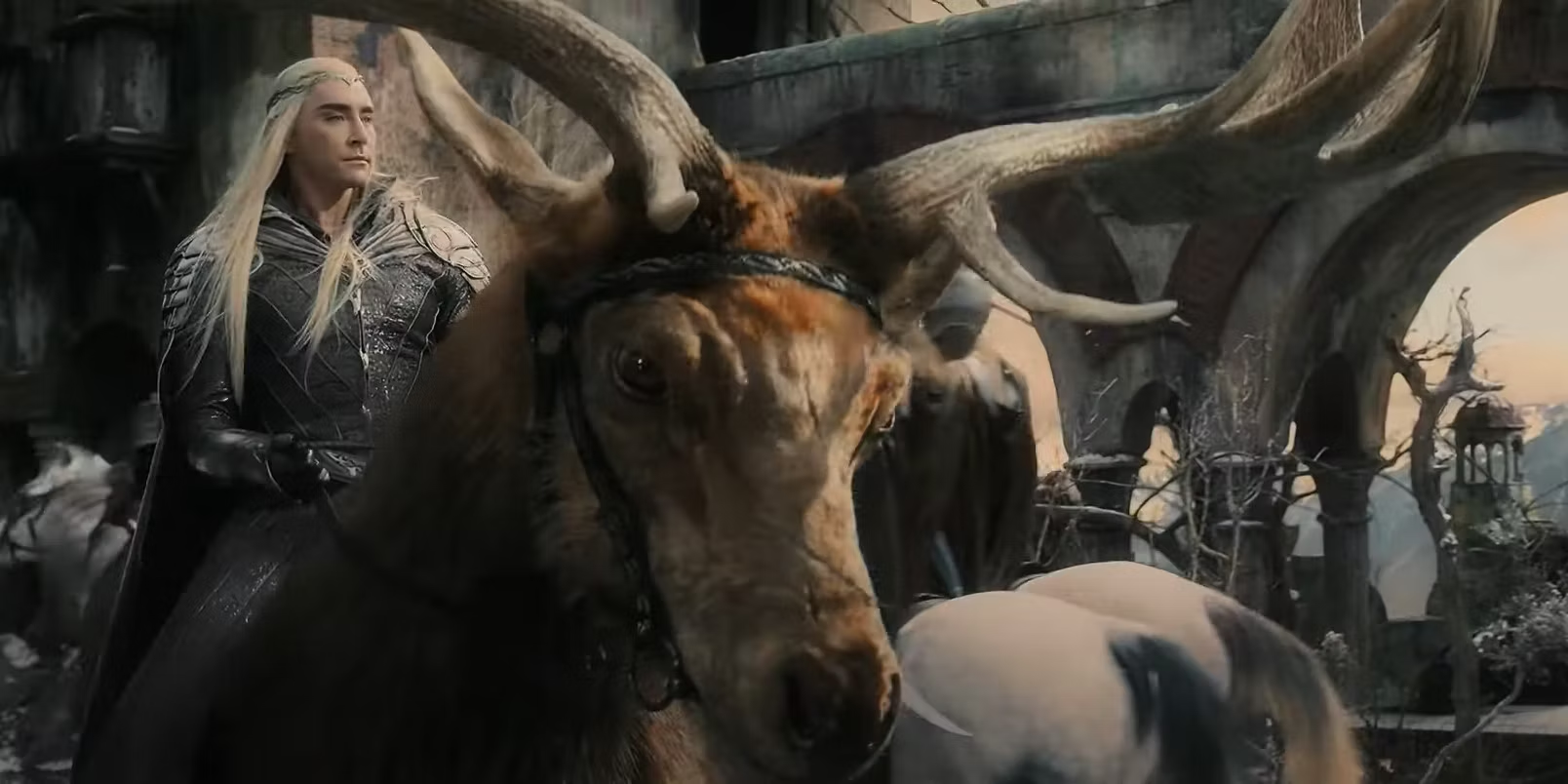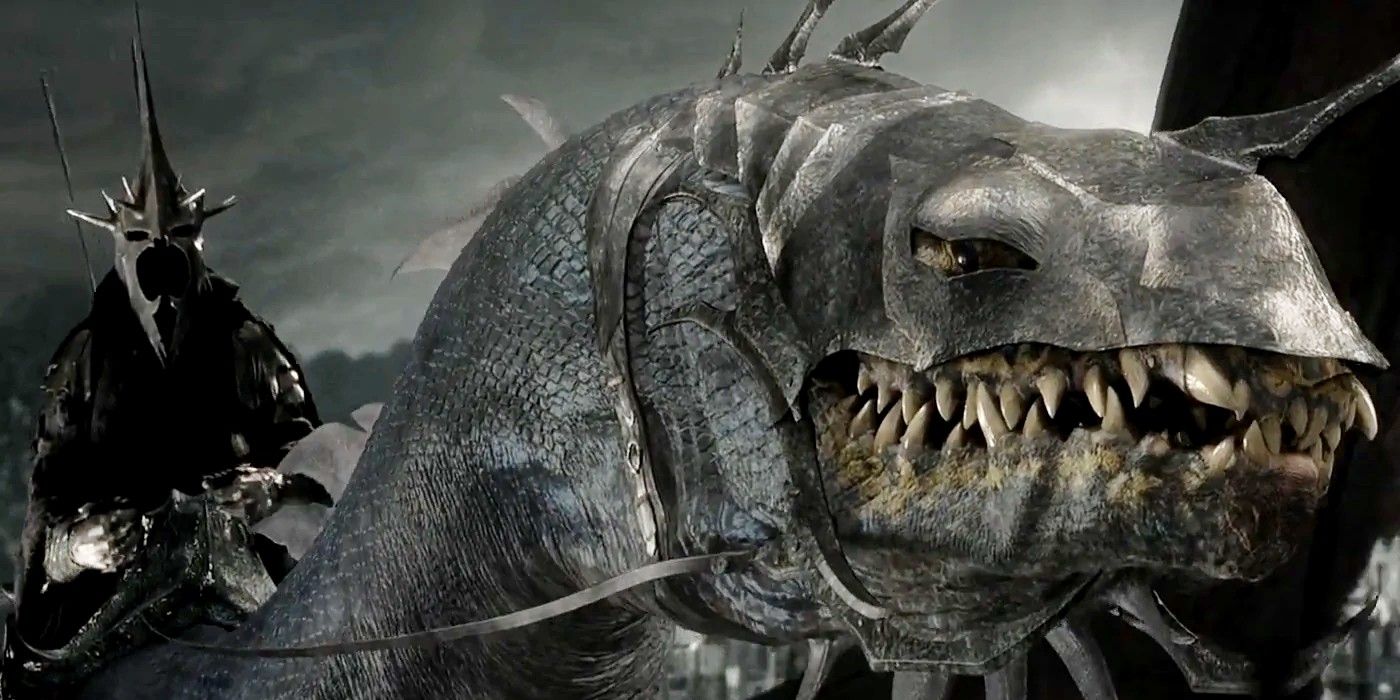
In a departure from traditional fantasy, J.R.R. Tolkien’s Middle-earth was heavily influenced by real-world history, particularly medieval Europe. His vision for Middle-earth was to portray it as an ancient mythological past for England. Interestingly, Tolkien envisioned that the world of Middle-earth would eventually transform into our own world; magic would diminish, technology would progress, and iconic realms like Gondor would give way to more recognizable entities. This concept opens up a wealth of intriguing questions about Tolkien’s mythos. For instance, if Middle-earth is meant as a forgotten chapter in our world’s history, does that imply it had a prehistoric era? If so, how did the magic of the setting shape this period, and are there any remnants of it lingering by the time of ‘The Lord of the Rings‘?
Technically, prehistory refers to the time before written records. Consequently, Middle-earth undoubtedly had a prehistoric phase. The divine beings known as Valar and Maiar were the initial inhabitants of the world depicted in ‘The Lord of the Rings’, and they didn’t require written records. It wasn’t until the Awakening of the Elves that alphabets could start to evolve.
In J.R.R. Tolkien’s fictional world, the first known written language was named Sarati. This script was developed around the 1169th Year of the Trees, several centuries prior to the creation of the Sun and Moon as we know them. Sarati served as a means for Elves to document stories that had previously been passed down orally. It paved the way for Tengwar, the primary Elvish script featured in The Lord of the Rings. Therefore, anything happening before the creation of Sarati can be considered the pre-history of Middle-earth. Significant events from this era include the creation of various entities, the Awakening of the Elves, the Battle of the Powers, and the imprisonment of the Dark Lord Morgoth. Despite this period not resembling Earth’s prehistoric times, characters such as Rúmil and his companions were similar to those seen in The Lord of the Rings. Interestingly, both the novel and Peter Jackson’s film adaptations included some creatures reminiscent of real-life prehistoric animals. Even Tolkien himself acknowledged certain analogies to these primordial beings.
Some of The Lord of the Rings’ Animals Had Direct Parallels to Prehistoric Wildlife




In the Battle of the Pelennor Fields, the Haradrim rode colossal beasts known as oliphaunts or mûmakil in their language. Despite being often likened to elephants, they were significantly larger, more akin to ancient relatives of elephants such as the woolly mammoth or Palaeoloxodon. In this same battle, creatures reminiscent of Megacerops, a prehistoric rhinolike species, were depicted in Peter Jackson’s adaptation of “The Lord of the Rings: The Return of the King”. Similarly, in “The Hobbit: The Battle of the Five Armies”, Jackson introduced creatures resembling Megaloceros giganteus, another prehistoric species. Lastly, there were the enigmatic entities, among the most intriguing aspects of “The Lord of the Rings” lore. Tolkien revealed very little about them; however, they were incredibly ancient, with Gandalf suggesting they had been in Middle-earth before even the Maiar arrived, making them truly prehistoric.
Although the creatures in the films were like serpentine dragons, they were more akin to featherless birds in the novel. In “The Battle of the Pelennor Fields” from The Return of the King, the Witch-king of Angmar’s fearsome beast was described as having no quills or feathers, and its wings resembled hidey webs between horned fingers. A fan named Rhona Beare speculated that this creature might be a pterodactyl, given Tolkien referred to it as “a creature of an older world.” However, Tolkien clarified in response that while the beast was indeed ancient, it was not specifically a pterodactyl.
It’s important to clarify that I didn’t mean for the Witch-King’s horse to be what we now call a pterodactyl, as it’s often depicted, especially with less solid evidence than many creatures in the modern, semi-scientific ‘Prehistoric’ mythology. However, it does share some characteristics of a pterodactyl and seems influenced by this new mythology. In fact, its description opens up a possibility that it could be a surviving creature from earlier geological periods.
Essentially, you could say that the fierce creatures might be likened to what pterodactyls would appear in a fantastical context. In 1958, when Tolkien wrote this letter, there wasn’t as much knowledge about the prehistoric world available. Consequently, he viewed that period as having its own unique mythology.
The Lord of the Rings Reinterpreted Aspects of History
As a dedicated fan of fantasy films, I often ponder the striking resemblances between the legendary monsters of our favorite worlds and real-life creatures from our past. Take dragons, for instance, which share uncanny similarities with fearsome dinosaurs like the Tyrannosaurus rex. They were enormous, boasted sharp teeth and claws, and sported a blend of reptilian and avian traits. While Smaug from ‘The Hobbit’ is perhaps the most iconic dragon in J.R.R. Tolkien’s Middle-earth, he was just one among many, each with its unique characteristics. Some were smaller than Smaug, while others were colossal, capable of crushing entire mountains under their immense weight. Interestingly, there were even dragons that lacked wings, such as some in the vast tapestry of Tolkien’s legendarium. So, it’s not too far-fetched to imagine dragons as representations of various prehistoric creatures that once roamed our planet.
In J.R.R. Tolkien’s mythos, dragons were crafted by Morgoth during the early First Age, a period that while not prehistoric, preceded significant events in his legendarium. Unlike their pterodactyl-like counterparts, Tolkien disregarded the idea of dragons being dinosaurs. Instead, he believed dinosaurs were less inspiring compared to dragons, providing fewer opportunities for creativity and imaginative storytelling. In his essay “On Fairy-stories,” Tolkien recounted his distaste for being informed that these ‘prehistoric’ creatures were labeled as dragons, as it felt like a scientific reduction of magic and fantasy in his world. Despite this, dragons could serve the purpose of dinosaurs within Middle-earth, allowing one to envision them buried underground with tales spun about their origin.
Middle-earth’s History Does Not Align With the Real World’s
In contrast to some resemblances, the chronology of Middle-earth deviated from that of our world. J.R.R. Tolkien’s work, “The Silmarillion,” encompassed the entire history of his fictional realm, starting from the creation of the universe itself, and it did not contain references to dinosaurs or cavemen. The earliest inhabitants of Middle-earth appeared to be only slightly different from their descendants in the Third Age. Moreover, “The Silmarillion” made no mention of a catastrophic event like a meteor strike or a global ice age that drastically altered life on the planet. It’s crucial to understand that Tolkien envisioned Middle-earth as a mythical past rather than a literal one. “The Silmarillion” is an English translation of what Bilbo Baggins wrote, which was itself a Westron translation of Elvish texts from Rivendell, likely penned after the events they described. Even within the context of “The Lord of the Rings,” the accuracy of the details in “The Silmarillion” may not have been completely reliable.
In essence, legends like those found in The Silmarillion may have originated from real-world events, such as the Elves possibly basing their stories on catastrophes akin to meteor strikes, as depicted in tales such as the destruction of the Two Lamps or the Battle of the Powers. As Tolkien noted when discussing dinosaurs, approaching fantasy without a touch of whimsy and disregard for strict reality can diminish its charm. The Lord of the Rings, though influenced by history, was primarily a work of fiction rather than historical fact. While some Middle-earth creatures might resemble dinosaurs, labeling them as literal dinosaurs within Tolkien’s mythos would be at best inaccurate.
Read More
- Clash Royale Best Boss Bandit Champion decks
- Chuck Mangione, Grammy-winning jazz superstar and composer, dies at 84
- Clash Royale Furnace Evolution best decks guide
- Riot Games announces End of Year Charity Voting campaign
- Mobile Legends November 2025 Leaks: Upcoming new heroes, skins, events and more
- Clash Royale Witch Evolution best decks guide
- Deneme Bonusu Veren Siteler – En Gvenilir Bahis Siteleri 2025.4338
- King Pro League (KPL) 2025 makes new Guinness World Record during the Grand Finals
- Clash Royale Season 77 “When Hogs Fly” November 2025 Update and Balance Changes
- Tourism Malaysia Eyes Esports Boom: Director General Highlights MLBB M6 World Championship and Future Opportunities
2025-05-15 02:51